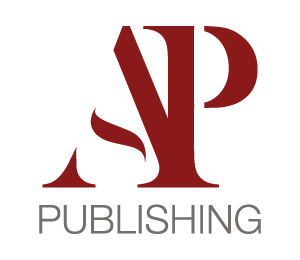La 954-1 va in pensione!
tratta da machinebuilding.net
Come migrare dalla EN 954-1 alla EN ISO 13849-1 o EN 62061
EN 954-1 non sarà più attuale alla fine del 2011, per cui le aziende che utilizzano ancora questo standard di sicurezza delle macchine necessitano di migrare a unostandard EN ISO 13849-1 o EN 62061. Questo articolo fornisce una tabella di marcia per facilitare la transizione.
Rockwell Automation reported at a recent Machinery Safety event that many companies supplying machines to the European market are still working to EN 954-1 (Safety of Machinery – Design of safety related control systems), even though this standard will be withdrawn at the end of 2011 (see EN 954-1 extension confirmed as two years). Moreover, there are sound reasons for using the newer functional safety standards instead (see this article EN 954-1 and ten reasons NOT to use it).
If you are a machine builder working to EN 954-1, it is essential that you migrate to one of these two functional machinery safety standards before the end of 2011:
- EN ISO 13849-1, Safety of machinery, Safety-related parts of control systems, Part 1: General principles for design
- EN 62061 (IEC 62061), Safety of machinery, Functional safety of safety-related electrical, electronic and programmable electronic control systems
This article provides a roadmap to assist machine builders in making the transition.
EN 954-1 and CE marking
New machines need to be CE marked if they are to be placed on the market in the European Economic Area (EEA), Switzerland or Turkey. The same is true whether the machine is sold to another company or built for use in-house. In addition, an existing machine may be classed as ‘new’ (and therefore need CE marking) if it is significantly modified or upgraded (eg by retrofitting a manual machine tool for CNC operation).
EN 954-1 currently provides a ‘presumption of conformity’ to the new Machinery Directive, so complying with this standard will be sufficient to meet certain of the Essential Health and Safety Requirements (EHSRs) of the Directive. Of course, there will almost certainly be other Harmonised standards with which the machine should comply to provide a presumption of conformity with other EHSRs.
If the machine builder is constructing a one-off machine that will be placed on the market before the end of 2011, then there could be an argument for working to EN 954-1 (but see EN 954-1 and ten reasons NOT to use it). However, if there is a chance that the machine will not be delivered by the 31 December deadline, or if series production means that future deliveries are anticipated, then EN 954-1 should be dropped in favour of one of the functional safety standards.
To decide which of the functional safety standards to use, see the IEC/TR 62061-1 guide to application of ISO 13849-1 and IEC 62061. In most cases the safety-related control system will be designed to EN ISO 13849-1, as this caters for non-electrical as well as electrical hazards (EN 62061 relates only to electrical, electronic and programmable electronic control systems). Much has been written about the processes involved in determining the EN ISO 13849-1 Performance Level (PL) required and achieved, but bear in mind that there is also a Simplified procedure for assessing PL to EN ISO 13849-1.
Which Directive?
While the main focus of this article is to provide a roadmap for the transition from EN 954-1 to EN ISO 13849-1 or EN 62061, this has to be considered in the context of CE marking. If the machine is being CE marked, is it being CE marked to the old or new Machinery Directive? Or is compliance with the new Directive being claimed, even though no thorough assessment has been carried out since the machine was CE marked to the old Directive? To help machine builders check their level of compliance with the ‘new’ Machinery Directive 2006/42/EC (which has been current since 29 December 2009), MachineBuilding.net has published a free Guide to the New Machinery Directive that highlights the differences between the old and new Directives and discusses the implications of the changes.
Having decided on the best functional safety standard to use for the machine in question, it will be necessary to update the design documentation and Declaration of Conformity accordingly. In some cases minor changes to the design of the safety-related control system may also be necessary.
Designers should also check that the correct procedures are being followed, and that the documentation is in order as required by the new Machinery Directive (for example, EC Type Examination Certificates issued under the old Directive need to be updated before conformity with 2006/42/EC can be claimed). And, depending on the type of machine, designers should assess whether any other Directives are applicable.
A note about standards
In order to claim compliance with a standard, it is really necessary to own a copy. Unless the machine builder already owns up-to-date copies of the relevant standards, buying them can be expensive. If buying from BSI, savings can be made by becoming a Member, as the 50 per cent discount off the cost of standards might more than pay for the membership fee, depending on the number of standards purchased and the fee, which, in turn, depends on the type of organisation and its turnover.
Resources and support
While the foregoing provides some assistance for migrating from EN 954-1 to EN ISO 13849-1 or EN 62061, taking any necessary action may require the use of various resources, many of which are available free of charge. MachineBuilding.net has identified the following, but please email the editor (editor@machinebuilding.net) if you are aware of any others.
- IEC/TR 62061-1 ed1.0 Guidance on the application of ISO 13849-1 and IEC 62061 in the design of safety-related control systems for machinery. This document describes which standards can and cannot be used in different scenarios, and discusses the ways in which one standard may be preferred over another.
- Free books have been published by Rockwell Automation (Safebook 4 and EN ISO 13849-1), Pilz, Laidler Associates and Sick.
- Dedicated machinery safety websites have been created by Rockwell Automation and Wieland Electric.
- Free and paid-for training courses and seminars are available from many providers, including Rockwell Automation, Pilz, Laidler Associates, Sick, Wieland Electric, Leuze electronic, Health & Safety Compliance Engineering, PPMA (Processing & Packaging Machinery Association), Health and Safety Laboratory (HSL), Festo, ISS Safety and Oxeta.
- Procter Machine Guarding offers a number of Free downloads including a Designer’s Guide to Machinery Guarding Standards, a Risk Assessment Calculator, a Safety Distance Calculator, and two White Papers, one on the subject of Machinery Directive and Fixings for Fixed Guards and the other on CE Marking of Guards.
- Pilz offers its PAScal Safety Calculator for calculating the PL (Performance Level) and SIL (Safety Integrity Level) when working to EN ISO 13849-1 and EN/IEC 62061, respectively.
- SISTEMA, which is maintained by Germany’s IFA, is a free software utility for applying EN ISO 13849-1; most of the leading manufacturers of safety products supply free component libraries containing the necessary data for use within SISTEMA.
- A free EN ISO 13849-1 Performance Level Calculator is also available from the IFA; this simple tool consists of two discs and, by rotating the bottom disc, values for Performance Levels can be found for different mean times to dangerous failure, categories and diagnostic coverage.
- Technical support is offered by many of the machinery safety component suppliers; sometimes this comes free of charge, while at other times you will have to pay for the consultancy or engineering services – ask around, as the value of the free services can be substantial.
- A Machinery Safety Alliance has been formed by Festo, Fortress Interlocks, Pilz Automation Technology, Troax, UK Engineering and Werma; the aim is to help machine builders comply with safety standards and legislation while, at the same time, safeguarding productivity.
- It is important that safety-related control system designs are validated (see this article from Laidler Associates: The need for validation of safety-related control system designs); Pilz also offers a safety validation service for machine builders, validation is included within Rockwell Automation’s portfolio of Machine Safety Services, and several of the other companies mentioned above can also validate machine builders’ designs.
Given the wealth of resources available, most machine builders should find it relatively straightforward to migrate from EN 954-1 to EN ISO 13849-1 or EN 62061, though the application of the latter can be more difficult. But the important point to note is that after the end of 2011 it will no longer be legal to place machinery on the market if it has been designed in accordance with EN 954-1 rather than one of the newer functional safety standards for machinery, so machine builders must make the transition. The sooner this is done, the better, as no doubt there will be increasing demand for the technical support from component suppliers as the deadline approaches.

